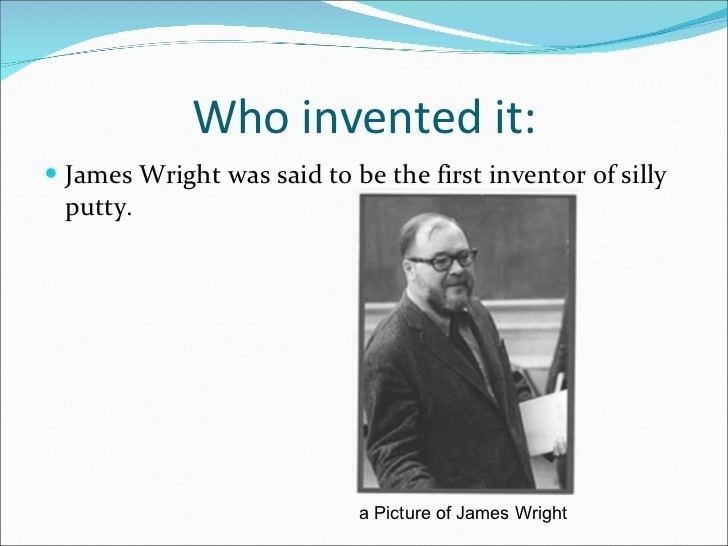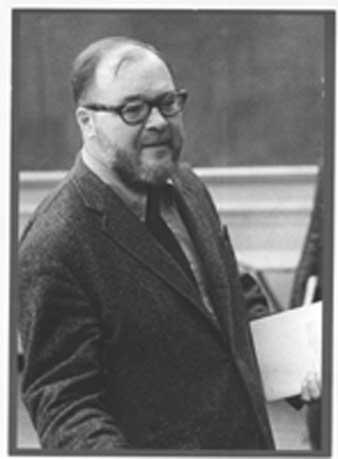
The history of silly putty was featured on the history channel and can. It’s unclear who invented silly putty, but peter hodgson was the genius who started marketing it.

The history of silly putty was featured on the history channel and can.
James wright silly putty biographie. James wright was an engineer at general electric who invented silly putty in 1943. The origins of silly putty®. James wright (inventor) james wright� was an engineer at general electric who invented silly putty in 1943.
The invention of silly putty happened by accident. At first they called it bouncing putty, and. By jacob roberts | august 2, 2015.
The invention of bouncy putty that was later renamed silly putty happened accidentally. Most people are not aware that silly putty was anything but silly at its inception. Silly putty comic book ad, 1963 silly putty didn’t start as a toy.
The history of silly putty was featured on the history channel and can. He was charged with finding a substitute for synthetic rubber that wouldn’t cost the government an arm and a leg to produce. It was introduced to the public in 1950 by peter hodgson.
Silly putty is a toy based on silicone polymers that have unusual physical properties. Sama seperti banyak ciptaan hebat, penemuan itu berlaku secara tidak sengaja. Crayola acquired the exclusive manufacturing rights to silly putty in 1977.
Ia mempunyai sejarah yang menarik sejak itu. They mainly used it to secure tools in place so they wouldn�t float away. It was introduced to the public in 1950 by peter hodgson.
During one of his failed experiments, wright had combined boric acid and silicone oil to produce a gooey substance he referred to as “bouncing putty” in. During world war ii, while looking for a cheap substitute for rubber, an engineer for general electric, james wright, accidentally developed silly putty®, now a famous toy.* silly putty is an organosiloxane polymer made from silicone oil and boric acid. Silly putty was discovered in 1943 by james wright who mixed boric acid and silicone oil together.
Silly putty was discovered in 1943 by james wright who mixed boric acid and silicone oil together. In the 1940s, when the united states war production board asked general electric to synthesize a cheap substitute for rubber, james wright, a company. James wright�s product left him an estate of $140 million by the time of his death in 1976.
Silly putty dissolves in alcohol. Silly putty was discovered in 1943 by james wright who mixed boric acid and silicone oil together. Silly putty was first sold in 1950 for $1.
Crayola acquired the exclusive manufacturing rights to silly putty in 1977. The formulas are considered proprietary. During world war ii, engineer james wright was working for the u.s.
The story of silly putty: When he dropped boric acid into silicone oil, he got a substance that was stretchier and bouncier than rubber. Engineer james wright was one of the people trying to solve this problem, which is when he invented silly putty by mixing boric acid into silicone oil.
James wright stumbled upon an odd concoction: Toy store proprietor and former advertising copywriter paul hodgson came up with the name silly putty off the top of his head while playing with the pink polymer. 2,541,581 which issued to james g.
Silly putty was one thing taken into lunar orbit in 1968 during the apollo 8 mission. The most widely accepted story (and the one endorsed by crayola) attributes the invention of this toy to james wright, an engineer working for general electric in new haven, connecticut. Silly putty was discovered in 1943 by james wright who mixed boric acid and silicone oil together.
Hand sanitizer containing alcohol is usually the best way to get the putty out of hair or clothing. A silicone putty exhibiting elasticity or bounce is described in u.s. Silly putty®, still a recognized name in over 95% of american households, remains one of the classic novelty products of modern times.
It was introduced to the public in 1950 by peter hodgson. The goo wright made laid in obscurity for 6 years until a salesman by the name of peter hodgeson and toystore owner ruth fallgatter rebranded it into a child’s toy (“15 facts about silly putty,” n.d.). The invention of nutty putty, later renamed silly putty.
During world war ii, the united states couldn�t obtain natural rubber from asian suppliers, who gathered it from rubber trees. 29) is one of the zaniest chapters in the history of the general electric. It’s unclear who invented silly putty, but peter hodgson was the genius who started marketing it.
The full story of silly putty�s origins (silly putty, now a classic, all about/silicone products, dec. The invention of nutty putty, later renamed silly putty, happened accidentally. James wright, an engineer, discovered silly putty®.
During world war ii, the united states could not obtain natural. But a man named peter hodgson saw that it might be good as a toy. Silly putty is made primarily from silicone and color pigments.
War production board, trying to create an inexpensive substitute for synthetic rubber at a general electric lab in connecticut. A stretchy material that withstood decay and bounced 25 percent higher than rubber. According to wright, bouncing putties may be made by heating a mixture of dimethyl silicone and a boron compound, followed by the addition of inorganic fillers and zinc hydroxide and kneading the.
Silly putty was invented by accident. It was designed to be an alternative to rubber in a time when rubber was growing harder and harder to get. By the time hodgson died in 1976, silly putty was bringing in over $5 million a year.
Silly putty, created by either harvey chin, earl warrick, or james wright. Wright was working for the u.s. War production board at the time.
The substance wasn’t close enough to real rubber to replace it, so the government wasn’t interested. By the end of the 1960s the toy’s popularity had carried it behind the iron curtain and into space. Discovered by james wright in 1943 in a general electric’s laboratory in new haven, conn.• wright accidentally combined boric acid & silicone oil, producing an interesting gob of goo.• the product wasn’t good for manufacturing, but it was fun to play with!• the smithsonian institution included silly putty in its exhibit on the 1950s.
It was introduced to the public in 1950 by peter hodgson. When the japanese invasion of asia threatened america’s rubber supply during world war ii, chemists at general electric began looking for a synthetic substitute. Just as with many awesome inventions, the discovery happened by accident.
Who invented silly putty in 1943? Crayola acquired the exclusive manufacturing rights to silly putty in 1977. The inventor of silly putty probably didn’t find the substance that silly.